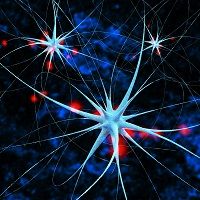Article
Compromised Areas of the Brain May Explain Psychopathy
Author(s):
Hemodynamic activity and neural coupling within the salience network are disrupted in psychopathy, and that the effects of psychopathy on moral evaluation are influenced by attentional demands, according to a study in Translational Psychiatry.

Hemodynamic activity and neural coupling within the salience network are disrupted in psychopathy, and that the effects of psychopathy on moral evaluation are influenced by attentional demands, according to a study in Translational Psychiatry.
Psychopathy is characterized by a number of potentially destructive traits, including a lack of guilt and empathy, narcissism, superficial charm, dishonesty, reckless risk-taking, and impulsive antisocial behavior. This combination of traits can obviously lead to immoral behavior, danger to others, and sometimes self-destructive impulses.
“Dysfunctional emotional processing is also a characteristic feature of psychopathy and is accompanied by atypical anatomical and functional connectivity between the amygdala and ventromedial prefrontal cortex, as well as anomalous neural activity in regions such as anterior cingulate cortex (ACC), anterior insula (aINS) and the amygdala in response to affective stimuli,” the study authors explained.
Although there are some differing views, some research into psychopathy has suggested that cognitive processing alone is insufficient to guide moral judgment. As the researchers noted, “Thus, if an individual does not possess a capacity for experiencing affiliative prosocial emotions to accompany or guide their actions and predict their consequences on others, having only an explicit knowledge of moral norms may be insufficient to motivate moral and caring behaviors.” In other words, many psychopaths “lack an intuitive affective aversion to harming others.”
The study looked in particular at the right temporoparietal junction (rTPJ), a region of the brain involved with moral judgment, and the salience network, which is anchored by the dorsal aspects of the ACC and the anterior insula (aINS). It aimed to identify the extent to which psychopathic traits relate to typical and atypical recruitments of these networks in the context of moral evaluations. The study assessed implicit and explicit processing of moral information by having the same participants evaluate the stimuli during two tasks.
The final study sample included 88 male volunteers from medium-security North American correctional facilities. When inmates with high psychopathy scores viewed morally laden scenarios, they showed widespread decreases in functional connectivity seeded in the rTPJ and right amygdala, two important computational nodes previously associated with intention understanding and emotional saliency, which contribute to moral cognition. During explicit moral evaluations, psychopathy was marked by reduced activity in several nodes of the salience network, including the amygdala and ACC.
“Psychopathy has consistently been associated with an abnormally low aversive response to the distress of others,” the authors continued. “Thus, greater activity in the [dorsolateral prefrontal cortex] dlPFC in the low-psychopathy group during the implicit moral evaluation task may indicate extra mental effort, or compensatory activity, required to inhibit such an automatic response when viewing harmful interactions.”
The authors hope the research leads to greater understanding of neural pathways in psychopathy, with an eye toward potential treatments.



